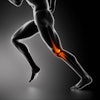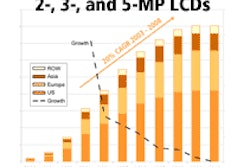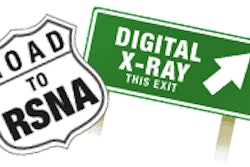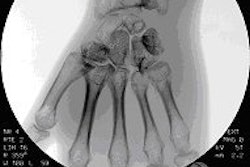SAN FRANCISCO - The radical revolution that had digital radiography (DR) replacing film-based imaging may not have come to pass, but in the orthodontics field, DR does have its advantages over traditional imaging, according to a presenter at the American Association of Orthodontists (AAO) meeting.
Still, does every orthodontist in town need to throw out his film cassettes and convert? Not necessarily, said Dr. Robert Scholz in a talk on Saturday. In fact, Scholz -- who is in private practice in Discovery Bay, CA, and an adjunct professor at the University of North Carolina in Chapel Hill -- began by offering reasons why some practices should stick with analog.
"Stay with film if it works for you -- you don't need to (recapture) the darkroom space, you don't need radiographs on the network, you are OK with scanning film, and your hardware is still healthy," Scholz said. "Film is the least expensive way to do radiography in an orthodontic office."
But Scholz recommended that a practice take the digital plunge if it meets one or more of the following criteria:
- Film processing is outsourced.
- Hardware is wearing out.
- Need to eliminate scanning by putting images on a network.
- Need to recapture the darkroom space for other uses.
- Must become more efficient.
Scholz then offered some tips on choosing a digital system, focusing on direct DR and indirect DR. "I would like to give you some guidelines," he said. "I don't have all the answers, but I've done a ton of homework."
Direct DR
In addition to the reasons listed above, other benefits of direct DR are financial, including eliminating film processing and its related costs (maintenance, film, and chemicals and their disposal). However, switching to direct DR will require a considerable up-front investment. Depending on the system, equipment costs run from $50,000 to $72,000, Scholz said.
What does that kind of money buy? Definitely faster scanning and acquisition times, Scholz pointed out. Currently available direct DR systems can acquire images in real time or within 20 seconds. Also, DR systems will offer enhanced imaging options such as panoramic cephalometric x-ray, cephalometric landscaping, and mandibular planning. Finally, direct DR systems have been shown to reduce radiation exposure by half, he said.
Questions remain about direct DR, however, including which system to buy. Different machines have the capacity to accommodate for patient movement, anywhere from eight to 15 seconds. Second, how many sensors are necessary? If only one is purchased, it will have to be manually moved to obtain cephalometric and panoramic views, making it vulnerable to damage. Two sensors mean the equipment is secured in place, but with a price tag of about $10,000 per sensor, it may not be financially feasible, Scholz said.
Indirect DR
While indirect DR is less expensive than direct DR, it is a slower process. Indirect systems start about $18,000 and top out at $28,000. Image acquisition times range from 30 seconds to as long as 4.5 minutes. As with direct DR, radiation doses are lower and most indirect DR systems have a mechanism to account for patient movement.
But choosing an indirect system also means dealing with the phosphor plates. Plates of varying sizes may be required to obtain panoramic or cephalometric images. The lifespan of phosphor plates is not entirely clear, Scholz said. Plate manufacturers state that one plate is good for 1,000 uses. On the other hand, indirect DR system builders claim anywhere from 4,000 to 100,000 uses. Scholz said a colleague of his in North Carolina has been using his phosphor plates for three years to acquire 9,000 cephalometric images.
Support and storage
Whether an orthodontist decides to go with indirect or direct DR, there are some universal issues to both. First, there is the matter of a smooth transition from imaging to image management to storage.
"Be sure that the imaging program that you are using has an interface to the x-ray machine," he said, suggesting that a well-organized file system should work as follows: open imaging, capture images, capture panoramic image, save in imaging folder, capture cephalometric image, and save in imaging folder.
A more important issue is user support. Scholz suggested not relying on the vendor's word as to the quality of their technical services. "Talk to end users in your area," he advised. "Ask them about their experience with getting equipment fixed. You can't get a handle on support by asking the vendor or distributors."
Finally, orthodontists should take a long look at how they use x-rays, Scholz said. "How many radiographs will you take (of a singe patient)? How will you charge for them?" Overall, a direct system is for someone who is looking to upgrade and is willing to spend the money to do it, he said. An indirect system might be better suited for a practice that is willing to forgo some of the benefits of a direct system to keep costs down. Of course, maintaining status quo with a film-based system is perfectly acceptable, he reiterated.
By Shalmali Pal
AuntMinnie.com staff writer
May 25, 2005
Related Reading
MDCT advances oral and maxillofacial surgery practice, November 22, 2004
MRI clicks with TMJ diagnosis and treatment, October 15, 2004
Computed radiography's (not so surprising) resilience, September 16, 2004
Copyright © 2005 AuntMinnie.com



















